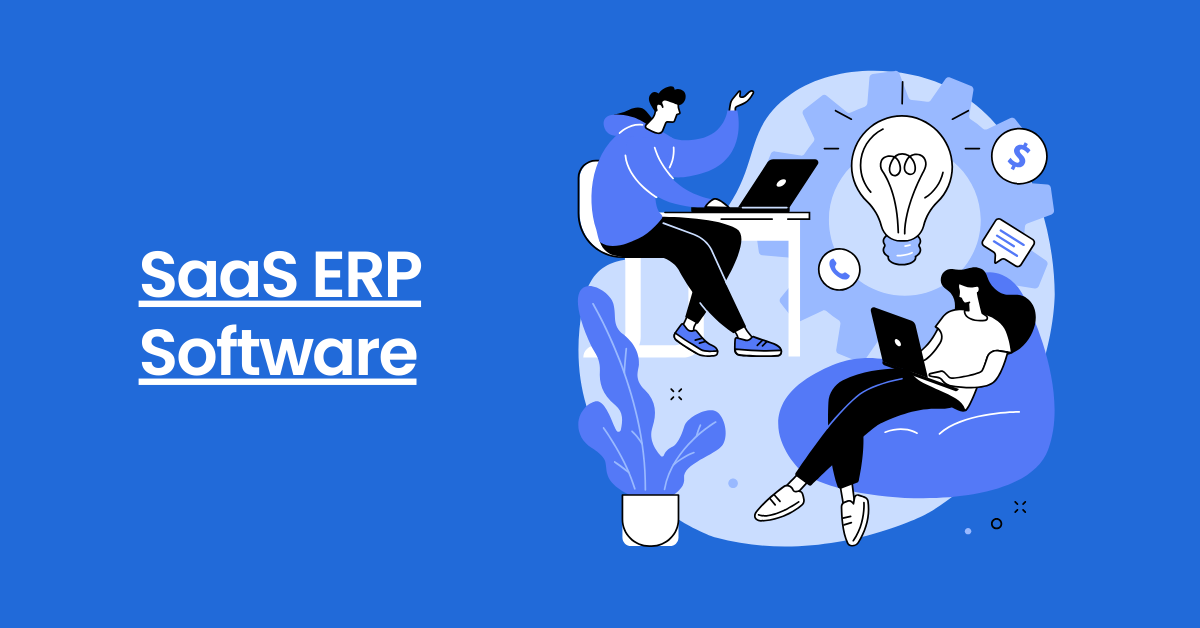There are several important aspects of the SaaS ERP software development process
Enterprise resource planning software is designed to control a business’s data and assets. Such software covers a variety of business processes like manufacturing, distribution, sales, finances, and human resources (HR). An ERP system also manages standardized data and operating models of an organization.
An ERP solution can handle:
- Routine and repetitive tasks
- Financial management
- Decision-making
- Interactions between departments
- Interactions with clients
- Company performance analysis
The ERP market is growing by the year. In 2018, it showed 10% growth and was estimated at $35 billion by Gartner. By 2022, this market is expected to reach $44 billion. However, enterprise resource planning is a relatively old market where both the competition and customer expectations are high.
Benefits of SaaS ERP software
- Flexibility and scalability — A SaaS solution is modular, and any module can be plugged in and out at any moment. Also, a cloud deployment allows you to quickly increase or decrease your capacity.
- Mobility and instant access to data — A cloud-based solution is usually available on any device. To access data, users only need their credentials and a browser.
- Reduced management costs — Paying for a subscription and updates to a cloud-based solution is often more affordable than buying on-premises software.
- Reduced IT maintenance efforts — A company doesn’t need in-house IT specialists to support a SaaS ERP system because the SaaS vendor provides all support and maintenance.
SaaS ERP market trends
Adding the following technologies to your solution will give you lots of advantages:
- The power of artificial intelligence. AI services can analyze statistics, make predictions useful for decision-making, automate routine tasks, and simplify interactions with customers by powering chatbots and automatically responding to typical emails.
- Connections to IoT devices. Support for the Internet of Things at the data structure level allows an ERP solution to gather gigabytes of information directly from devices. This saves the time of employees who need to collect this data.
- Data savings in the blockchain. Among other things, an ERP system generates and processes financial transactions, and the blockchain technology can help secure these transactions.
Basic Modules of ERP System
- Human Resource.
- Inventory.
- Sales & Marketing.
- Purchase.
- Finance & Accounting.
- Customer Relationship Management(CRM)
- Engineering/ Production.
- Supply Chain Management (SCM)
SaaS ERP development challenges
- Feature complexity.
- Business integration.
- Data migration.
- Lack of customization.
- Lack of data security.
- Speed of adoption.
- Hidden infrastructure-related expenses.
- Industry compliance.
Tips for painless SaaS ERP development
- Gather business, client, and compliance requirements.
- Establish the scope and budget for the project.
- Practice iterative development.
- Form a team and choose a technology stack.
- Design the solution architecture.
- Build a prototype.
- Pay attention to data management.
Final thoughts
Creating a custom SaaS ERP system may be complex and tricky, but at Xonier, we have vast experience developing SaaS solutions for different industries and use cases. The functionality of such a solution is strongly affected by market trends and client expectations, since modern SaaS ERP software tends to be customizable and industry-specific.


